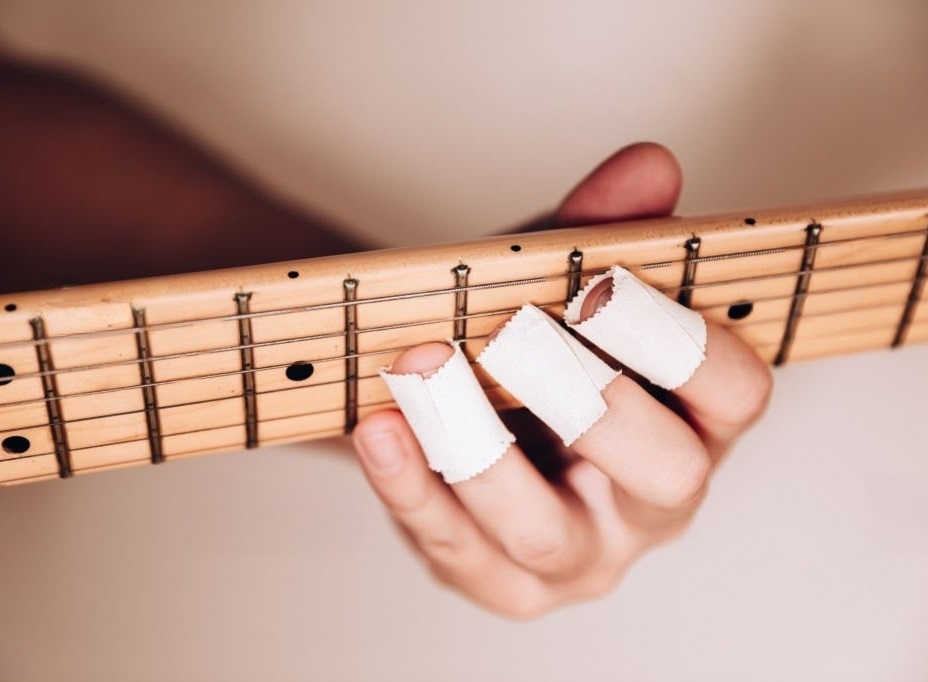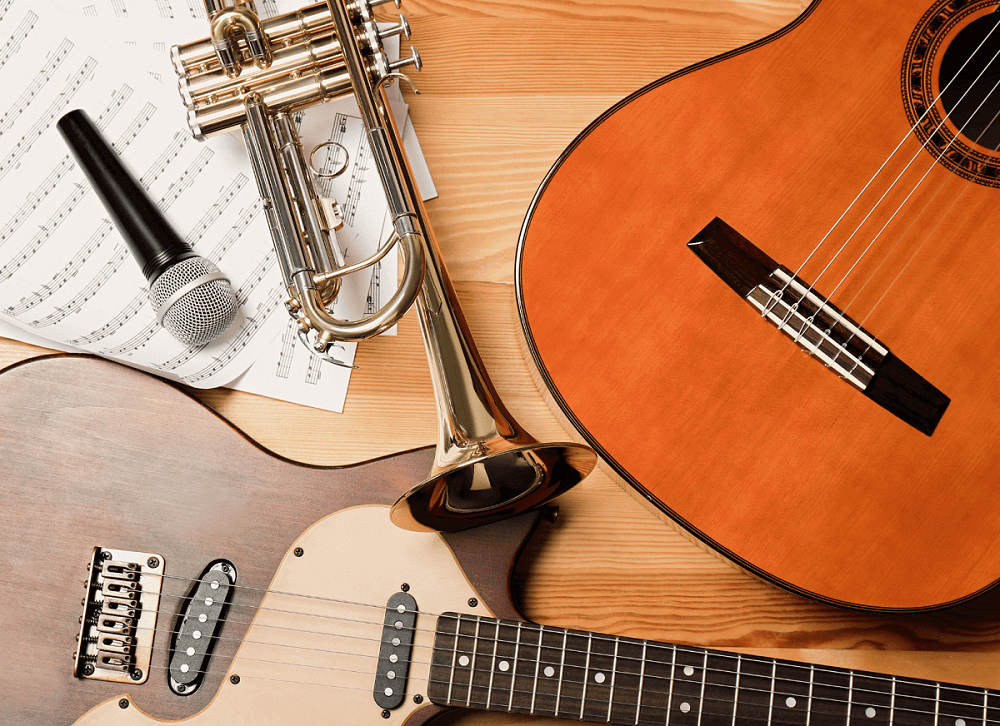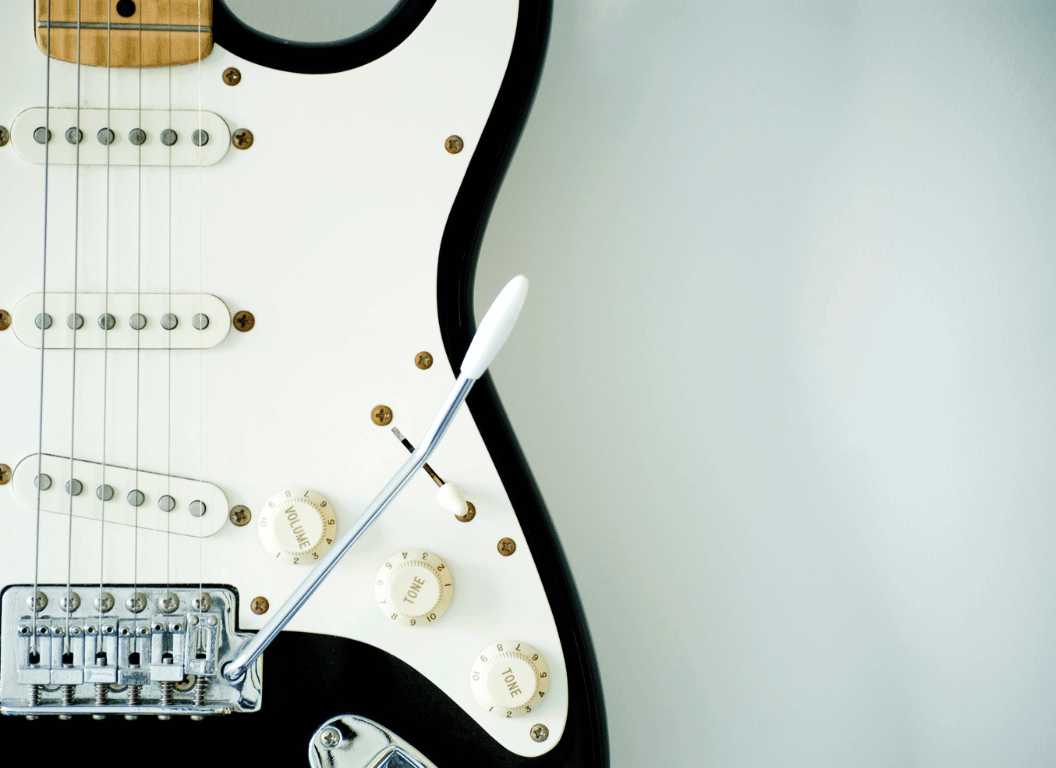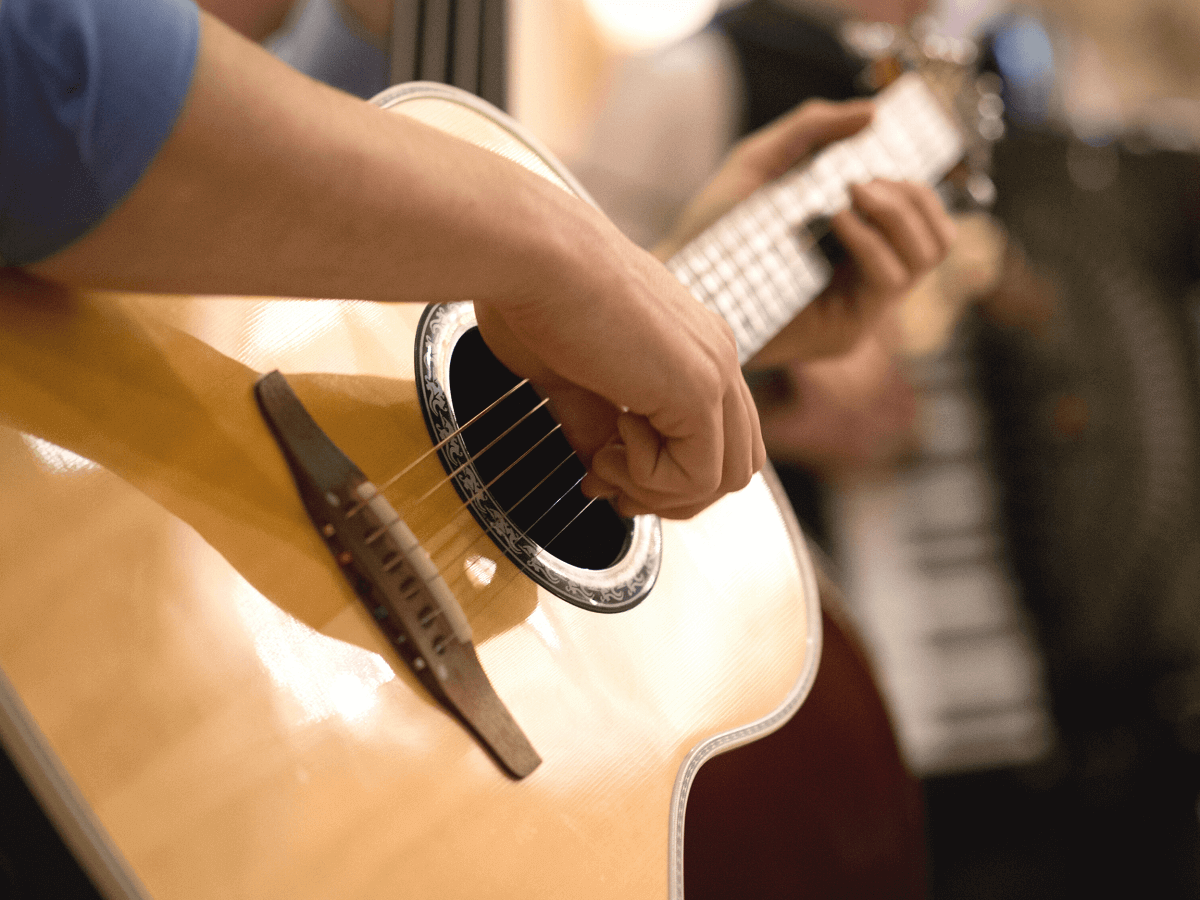In the world of guitar playing, we can witness a variety of techniques and styles that musicians adopt.
One such method that often intrigues observers is the habit of taping fingers among guitarists.
This practice, although not universal, is followed by some guitarists to achieve specific results.
Precisely why some guitarists tape their fingers and the purpose it serves may not be commonly understood.
In this blog post, we will delve into the reasons behind this intriguing practice, exploring the impact it can have on performance and technique.
Table of Contents
- Why Do Some Guitarists Tape Their Fingers?
- Understanding the Practice of Taping Fingers
- Benefits of Taping Your Fingers
- Does Finger Taping Have Any Downsides?
- How Does Taping Fingers Protect Guitarists?
- The Role of Taping in Conditions Like Tendinitis
- Do All Guitarists Tape Their Fingers?
- Practical Aspects of Fingertip Taping
- Is Fingertip Taping Suitable for Guitarists of All Levels?
- How Does Taping Impact Performance and Gripping the Frets?
- Variations in Taping Styles and Material
- The Bottom Line
Why Do Some Guitarists Tape Their Fingers?
Some guitarists tape their fingers to protect them from injuries attributed to prolonged or vigorous playing, such as blisters and calluses. Taping fingers can also provide valuable support to the joints and muscles of the hand and limit the development of conditions like tendinitis. Moreover, finger tape can enhance grip on the frets and improve playing technique, making it a favored choice of many musicians.
In the subsequent sections of this discussion, we delve deeper into the world of guitar playing techniques and protective measures, providing a richer understanding of the musician’s experience.
It’s not just about taping fingers; there are a wealth of other methods used by guitarists.
Small tips and tricks can greatly change the music produced and influences the longevity of a musician’s career.
The exploration of important topics such as the impact on sound quality, the right method of taping, and alternatives to taping, promises to engage readers wanting a comprehensive insight into this subject.
Let’s dive in and uncover the depth of this fascinating aspect of guitar playing.
Understanding the Practice of Taping Fingers
The practice of taping fingers is a common technique utilized by many guitarists.
It is not, however, just a random act that guitarists do to make a fashion statement or personal brand.
The action has specific underlying reasons and benefits related to playing the instrument.
One might wonder why tapers are essential when it appears that the bare fingers should make the strumming and fretting easier.
Behind this technique, which might seem counterintuitive, are several reasons that have been proven effective in easing guitar playing.
– Why do Guitarists Tape Their Fingers?
Several reasons can be enumerated why guitarists use finger taping techniques.
Aside from the obvious reason of protecting the fingers from injury, taping also helps in increasing the efficiency and comfort of playing the guitar.
“The main purpose of taping fingers is to provide protection against the constant friction and pressure that playing a guitar can produce.”
This technique offers a layer of protection to the fingers, which are exposed to the constant pressure exerted by the strings.
The constant friction can cause blisters and cuts, making the fingers painful and thereby, hindering the guitarist’s ability to play to their full potential.
Furthermore, it also allows guitarists to perform for longer periods without experiencing fatigue or discomfort.
The effects of the pressure and friction are minimized, leading to an enjoyable and longer playing time.
– How does Taping Plays a Role in Performance?
The role of taping also extends to enhancing live performance.
It might be surprising, but the inclusion of taping plays a part in maintaining a consistent performance.
While it acts as a physical barrier, it also supports precise finger positioning.
This method promotes control and efficiency during live performances or recording sessions by reducing the margin of error caused by inadvertent finger movement.
Finger taping can promote better control, precision, and efficiency during live performances.
The act of taping fingers can also affect the sound production.
The thickness of the bandages can add to the player’s own skin thickness, thereby giving a different impact on the strings.
The result is a more muffled sound compared to when the naked fingers are used.
By watching the above video, viewers will gain a practical overview of how finger taping is performed.
Additionally, they will get a comprehensive understanding of how finger taping can assist in achieving effective guitar play.
– Cultural and Personal Reasons
Not all the reasons for taping fingers revolve around performance and protection.
There are also cultural aspects and personal reasons behind the practice.
Some guitarists may decide to tape their fingers as a form of personal branding or fashion statement.
Notably, others may adopt the practice as part of a rite of passage in their community or culture.
While the use of finger taping aligns with practical and tangible benefits, guitarists should not underestimate its underlying cultural and personal aspects.
Benefits of Taping Your Fingers
When it comes to playing the guitar, taping the fingers has proven to be a beneficial practice for many.
Despite apparent initial discomfort, the benefits offered far outweigh this minor inconvenience.
The primary benefit of this technique is the protection it affords the fingertips.
– Protection for the Fingertips
Guitar strings, especially when played intensively, can exert significant pressure on the fingertips.
This leads to calluses, which while a right of passage for many guitarists, can be uncomfortable and detrimental to performance.
By taping the fingers, the strumming hand is provided with a layer of protection against this constant friction.
It can act as a barrier against the development of sore calluses, allowing musicians to play for longer periods without discomfort.
Taping the fingers provides a layer of protection allowing musicians to play for longer periods without discomfort.
In support of the quoted statement, numerous string musicians have credited their increased performance duration to the use of finger taping.
This minor adjustment in their routine has led to greater endurance during long gigs or practice sessions.
– Enhancing Grip
Aside from protection, taping fingers also enhances a guitarist’s grip on the instrument.
Especially when it comes to strings, having a solid and confident grip is essential for a good performance.
Finger tapes, due to their texture, provide a non-slip grip that significantly enhances the guitar’s handling and the subsequent fluidity in changing chords.
This is particularly advantageous during live performances, where adrenaline and nerves can cause sweaty palms and finger slips.
Finger tapes enhance a non-slip grip, resulting in better handling of the guitar and fluidity in changing chords.
Sweat-induced slip-ups can have a significant negative impact on a performance, spelling disaster for both seasoned and novice guitarists.
By using finger tapes, guitarists can help mitigate the chances of this happening and ensure a stellar performance regardless of stressful conditions.
– Expedited Healing
Another notable benefit of taping fingers for guitarists is expedited healing.
Long hours of practice often lead to finger injuries that, if not treated properly, can evolve into chronic conditions over time.
Finger tapes can provide immediate relief by reducing direct contact with the strings and ultimately foster faster healing.
They effectively serve as a makeshift bandage, protecting the injured finger during playing and allowing the healing process to occur concurrently.
Finger tapes can foster faster healing by reducing the injured finger’s direct contact with guitar strings.
Continuous impact and friction can significantly hinder a finger injury’s healing process.
The protective layer offered by taping allows for healing to occur unhindered, ensuring guitarists can maintain their practice schedules without major disruption.
In the world of music, where consistency can mean everything, this benefit of finger taping is tremendously valuable.
Does Finger Taping Have Any Downsides?
One common concern about taping fingers among guitar players is the potential for reduced tactile sensitivity.
This typically refers to the diminished ability to feel the strings and the fretboard, which some guitarists argue can impact the quality of their performance.
The type of tape used and the tightness of the applications can be factors that contribute to this reduction in sensitivity.
Your choice of tape can also influence the degree of movement restriction, and a balance is necessary because too much restriction can lead to the risk of injury.
Additionally, using specific tape that is not skin-friendly can cause skin irritation and uncomfortable skin reactions.
Ultimately, the technique of taping should be done correctly to ensure its effectiveness and to minimize potential drawbacks, like reduced tactile sensitivity and skin irritation.
Proper technique can help to mitigate these issues, keeping in mind that the goal is to provide support and prevent potential strain or injury without hampering the guitarist’s ability to perform.
Nonetheless, it’s quite essential to remember that the effectiveness of finger taping can somewhat vary depending on the individual guitarist’s skill level and the intensity of their routine.
Another potential drawback to consider is the risk of becoming too reliant on the protective benefits of finger taping.
Some guitarists might find it difficult to play without the tape once they become used to its support, which can potentially limit their ability to play the guitar naturally.
Furthermore, for beginners, relying on tape from the start might prevent them from developing the necessary callouses and finger strength needed to endure long practice sessions.
Long term dependency on finger taping can also potentially prevent the development of proper technique, which is critical for playing the guitar effectively.
While finger taping can provide the needed support, it should not replace the importance of correct technique and regular practice, factors that contribute to becoming a successful guitarist.
Therefore, it might be more beneficial for guitar players to use finger taping as a temporary support system, rather than depending on it permanently.
This way, guitarists can still enjoy the benefits of finger taping, without falling into the trap of long-term dependency that might hinder their overall progress and skill development in the long run.
How Does Taping Fingers Protect Guitarists?
For many guitarists, finger taping is a preventative measure used to avert potential risks of injuries inherently associated with the art of guitar playing.
Because the hand and finger muscles are constantly under strain, the likelihood of developing conditions such as tendinitis or arthritis is high.
– Protection Against Blisters and Cuts
Finger taping helps to protect against the blisters and cuts that can result from continuous playing.
As the strings of the guitar act against the soft flesh of the fingertips, blisters can form which, when popped or torn, convert into painful cuts.
Lacerations can interrupt practice sessions and performances, not to mention the long-term damage they can cause to the skin.
Finger taping provides a layer of protection to the skin, mitigating the chances of these blisters and cuts from forming.
Thus, it aids in maintaining the continuity and consistency of the guitarist’s practice or performance, while reducing potential long-term damage.
Guitarists, especially beginners, often find taping beneficial as it provides an added layer of padding between the fingers and the strings, reducing rawness and discomfort.
The layer of protection provided by finger taping mitigates chances of blisters and cuts, thus maintaining the continuity of practice or performance.
This quite simple preventative measure can make a significant difference in the overall consistency and longevity of playing time.
The utility of finger taping goes beyond just physical protection, contributing significantly to a guitarist’s comfort and confidence as well.
– Support for Finger Strength and Stability
Elongated periods of guitar playing can put immense strain on the fingers, leading to issues of finger strength and stability.
Given the different angles and tension that fingers need to navigate while playing, the chance of finger sprains is heightened.
Finger taping can work as an external support system that augments the finger’s natural strength, adding stability and reducing the chances of such injuries.
It can also help reduce finger fatigue, allowing guitarists to play for longer periods without discomfort or pain.
Beyond these immediate benefits, finger taping is a valid and often employed support system in comprehensive injury prevention strategies used by guitarists of all grades.
Finger taping can serve as an external support system, augmenting natural finger strength and reducing chances of sprains and fatigue.
By lending support to the strength and stability of the fingers, taping helps guitarists maintain their endurance.
This also adds to the guitarist’s confidence, assuring them that they have taken necessary precautions against common playing-related injuries.
The Role of Taping in Conditions Like Tendinitis
Amongst the numerous reasons for taping fingers, particularly amongst guitar players, one that stands out significantly is its role in managing and addressing conditions like tendinitis.
This condition, which primarily involves inflammation of the tendons, can be a regular companion of guitarists, resulting from the repetitive strain they put on their fingers.
– Causes of Tendinitis in Guitarists
Understanding why tendinitis commonly afflicts guitarists necessitates an appreciation of the stress placed upon their fingers.
As string musicians, guitarists are constantly engaging their fingers to create notes and melodies.
This involves considerable pressure being put on the fingertips, leading to potential inflammation of the tendons.
Furthermore, poor guitar playing techniques or overly aggressive play styles can exacerbate the development of tendinitis in musicians.
The consistent strain and pressure on the fingers of guitarists makes them a vulnerable group for developing tendinitis.
In tandem with this constant pressure, guitarists often invest long hours in practice and performance, giving the inflamed tendons little time for recovery.
In extreme cases, these factors can establish a cycle of inflammation and pain, potentially leading to chronic tendinitis.
– How Taping Provides Relief
Here, the practice of taping fingers can provide some much-needed relief for guitarists grappling with tendinitis.
Properly applied, tape offers additional support, stabilizing the affected fingers and reducing the strain on the tendon.
This support has a dual benefit – it facilitates healing in the inflamed tendon while still allowing the guitarist to engage without further aggravating the condition.
Taping fingers can be a valuable ally in managing tendinitis, providing essential support and helping to break the cycle of inflammation and pain.
Furthermore, finger taping also creates a smoother surface, reducing friction on the fingertips and further easing pressure on the tendons.
Knowing how and when to apply the tape, however, is key to reaping the benefits of this practice without incurring further injury.
In the video above, viewers will get an understanding of how to tape fingers properly for specific injuries.
Additionally, it provides a visual demonstration of the precautions and techniques to take into account when applying tape.
While taping fingers can offer notable benefits, guitarists must be conscious of potential challenges that may accompany this method.
For instance, poorly placed tape can restrict blood flow to the fingers, possibly leading to additional complications.
Another challenge lies in identifying the right type of tape and the ideal tightness for their specific needs and comfort.
The importance of trial and error in figuring out the best regimen for individual guitarists cannot be overstated.
Although finger taping can provide relief from tendinitis, the method does present potential challenges.
It is important for guitarists to understand and navigate these responsibly.
Navigating these challenges is necessary to make the most of taping, benefiting from its therapeutic properties and ensuring it serves as a tool for better performance rather than a hindrance.
With due care and responsibility, taping can be a practical practice in preventing and managing tendinitis amongst guitarists.
Do All Guitarists Tape Their Fingers?
The use of fingertip taping is quite common among professional guitarists.
These are musicians who play for long hours, in concerts, recording sessions or daily practice, thereby putting considerable strain on their fingers.
Many professional players view the practice as necessary for maintaining their performance output.
The taping serves as a protection mechanism against blisters and other types of wear and tear.
One area where most professional guitarists have found a significant advantage in taping their fingers is during long hours of practice and playing.
This practice helps in minimizing the discomfort that comes with extended hours of finger movement on the strings, allowing them to concentrate better on their guitar playing.
Thus, it’s not surprising that a notable percentage of professional guitarists have adopted the practice.
Unlike their professional counterparts, the use of taping among amateur guitarists is relatively low.
These musicians tend to play for shorter timeframes and at lower intensities, reducing the need for such protective measures.
However, this is not to say that taping doesn’t occur among amateur players.
Those that play frequently or for extended periods might still find the practice beneficial.
Another interesting aspect that may affect the prevalence of finger taping among guitarists is the musical genre they play.
Guitarists involved in genres like heavy metal or hard rock, where more aggressive guitar playing is the norm, are more likely to tape their fingers.
On the contrary, those involved in softer genres like jazz or classical music might find less need for the practice.
Practical Aspects of Fingertip Taping
The practice of fingertip taping among guitarists is a complex process, with multiple layers that require a considerable level of skill and knowledge.
– Understanding the Basics of Taping
The first aspect to consider is what kind of masking tape to use.
Usually, guitarists opt for a type of adhesive bandage known as “cohesive bandages”.
These bandages tend to stick together only with themselves, meaning that they won’t damage or stick to your finger skin or hair.
It’s important to find the right type of tape that is comfortable, effective, and non-damaging to the skin.
Moreover, it’s essential to find a tape that is delicate enough not to damage the guitar.
Making certain that the chosen tape won’t damage the guitar’s finish is a critical consideration when taping fingers.
A secondary, yet still crucial consideration, is determining the width and thickness of the bandage.
Broadly speaking, Guitartists prefer using 2.5 centimeters width adhesive bandage, for it allows for better control over how much pressure you apply to the finger and area you cover.
– Necessary Taping Techniques
The process of taping one’s fingers involves a few more considerations.
One essential element is how tight the bandages are applied.
They need to be tight enough to give support, but not so tight that they cut off circulation or cause discomfort.
It’s also a good idea to tape over the finger joints as a way of providing additional support and preventing injuries.
Yet, keeping the tape on the finger’s tips will offer extra grip while playing guitar strings.
The most common approach is to start at the base of the finger and work up towards the tip, covering both joints.
Both the tightness and the placement of the bandages can affect not only injury prevention but also the guitarist’s playing technique and comfort.
As such, it’s crucial to find a balance that works best for the individual guitarist.
– What to Avoid When Taping
There are several common mistakes that guitarists should try to avoid when employing this practice.
One issue is over-taping to the point where the finger loses its mobility.
This should be avoided at all costs, as it is likely to lead to other problems such as discomfort, skin irritation, and could negatively affect the performance.
Another frequent mistake is not replacing bandages regularly.
Tapes should be changed after every session or whenever they become loose, to avoid any potential skin issues and also to maintain their supportive function.
This video takes a deep dive into various techniques for taping fingers for sports, which could also be applicable for musicians.
Regardless of the sport, a good understanding of how to properly tape the fingers might significantly help prevent injuries and optimize performance, and it also shares insights into the potential common mistakes to avoid when taping.
Is Fingertip Taping Suitable for Guitarists of All Levels?
When it comes to determining whether or not fingertip taping is suitable for guitar players of all levels, there are several elements to consider.
– The Purpose of Taping
The main purpose of taping fingers for guitar players is to reduce discomfort and physical harm from constantly pressing strings against frets.
Often guitar strings can be coarse and can lead to callus buildup or even cuts on the fingertips.
This can be particularly troublesome for beginners who have not yet developed strong calluses on their fingers.
Therefore, beginners might benefit greatly from finger taping, as it allows them to play for longer periods without pain or discomfort.
This, in turn, facilitates longer practice sessions and faster progression in playing abilities.
In essence, fingertip taping serves as a protective measure that mitigates the discomfort often experienced by beginners who have not yet developed sufficient finger strength and calluses.
This is not to say that those with tougher fingers due to long-term playing wouldn’t find fingertip taping advantageous.
Even experienced players can fall victim to sore fingers after particularly long or intense sessions.
– Variability of Individual Need
The second aspect that needs consideration is that the necessity of fingertip taping varies from person to person.
Each guitarist has a unique style of playing, varying pressure they exert on the strings, and different skin resilience.
This means that some guitarists may feel more comfortable and perform better with taped fingers, while others might find it unnecessary or even restrictive.
Essentially, every guitarist’s need for fingertip taping is a subjective matter that depends on various factors.
In support of this point, it’s worth mentioning that not every professional guitarist adopts finger taping.
Many experienced players, especially those playing genres that require softer touch on the strings, might not need to use tape at all.
– Technique Influence
Last but not least, one should bear in mind the fact that finger taping influences playing technique as well.
Taped fingers tend to slide on the strings differently, and some players may find this alters their ability to achieve the desired sound.
This could either be a positive or negative effect, depending on the player’s individual technique and genre.
On the flip side, if done excessively and improperly, taping can also impede mobility and sensation, thus detrimental to finesse and articulation in playing.
Fingertip taping inevitably impacts guitar playing technique and may alter the sound produced by the guitarist.
Building upon this, it’s risky to rely solely on taping without working on building finger strength or honing technique.
It should be used as a tool to support practice, not be a crutch.
How Does Taping Impact Performance and Gripping the Frets?
The relationship between finger taping and a guitarist’s performance, particularly in gripping the frets, can be seen from dual perspectives.
– Role of Taping in Enhancing Performance
Firstly, taping the fingers can effectively enhance performance by improving grip and reducing pain.
It does so by providing an extra layer of protection to the fingertips, thereby reducing the tension and stress that can result from prolonged playing.
This extra protection can make finger movement smoother, enhancing the player’s ability to move swiftly across the guitar neck.
Moreover, taping can reduce the potential for blisters and callouses, which can impede smooth playing.
Consequently, the reduction of physical discomfort allows the musician to focus better on their art.
Taping, therefore, serves as a strategy to physically prepare the fingers for better performance outputs.
It optimizes performance by making the physical act of playing the guitar easier and more comfortable.
– Taping and Grip Strength
On the other end of the spectrum, there is also the concern that taping may affect grip strength on the fretboard.
Some guitarists worry that taping may lead to a compromised grip strength due to the slippery nature of certain tape materials.
However, the thickness and strength of the tape can actually offer a firmer grip depending on how it is applied.
It is important to note here that the quality and texture of the tape used do matter in this regard.
Choosing a tape that is too slippery or too thick can certainly hinder a guitarist’s capacity to grip the frets properly.
Thus, choosing the right type of tape and learning the correct taping technique can be instrumental in ensuring an improved grip.
The best practices for taping fingers for better grip include keeping the tape tight without constricting blood flow and applying it in a manner that provides adequate coverage without impeding natural finger flexibility.
The proper application of tape around the fingers can supplement grip strength and cushion the fingers for better performance.
Watching this video will help aspiring guitarists understand how to properly tape their fingers.
It contains practical tips and insight from an experienced guitarist, providing viewers with valuable knowledge and skill-building aspects of fingertip taping.
Variations in Taping Styles and Material
The world of guitar playing and the specific practice of fingertip taping present a broad variety of styles of wrapping the fingers and the diverse types of tape used.
Multiple Taping Styles Catering to Guitarists’ Needs
Every guitarist has personal requirements when it comes to holding the frets, picking the strings, and relieving discomfort or tension while playing.
This leads to a multitude of taping styles.
Some players might only tape their fingertips, employing a simple wrap around the very tip of each digit.
Here, the goal is primarily to protect the skin from blisters.
Others might prefer more coverage on their fingers, going as far as taping the whole or part of the finger.
This style usually offers greater support and can help with conditions like tendinitis or other related injuries.
A style that has gained popularity involves a mix – taping the fingertips and then a separate coverage at the base of the finger.
The base tape acts as a supportive band, further adding stability and relieving strain.
A style that has gained popularity involves a mix – taping the fingertips and then a separate coverage at the base of the finger.
This diverse mixture of tape styles caters to guitarists’ varied requirements – demonstrating the versatility and individuality of the practice.
Different Types of Tape Used by Musicians
Equally as varied are the types of tape used by guitarists for their fingers.
There is no universal tape that suits everyone’s needs perfectly.
Athletic tape is commonly used among guitarists due to its strong adhesive, durability and non-flexing characteristic.
These traits can often give the finger that additional level of support it needs.
Next in line is cloth bandage tape, which is more flexible and breathable, but maybe less durable.
It can be a good option when flexibility is a higher priority than durability.
There has also been an advent of specially designed taping products for musicians, offering the benefits of both kinds of tape, along with additional protective layers to maximize finger safety.
There has also been an advent of specially designed taping products for musicians, offering the benefits of both kinds of tape, along with additional protective layers to maximize finger safety.
As we delve deeper into the types of tape, it becomes clear that each offers specific advantages and drawbacks.
Selecting the right tape fundamentally depends on a musician’s comfort, their playing style, and the finger support required.
All in all, the practice of taping fingers showcases a distinctive and wide variety, which caters to the individual needs of every guitar player.
The Bottom Line
The practice of taping fingers among guitarists, while not applicable to all, reveals definite benefits that include aiding with conditions like tendinitis, protecting against injuries and improving grip on the frets.
However, there may be potential downsides such as discomfort or impediments to playing technique.
Typically, not all guitarists adopt this method, with variations in taping styles and materials used based on individual preference and need.
Regardless of the guitarists’ level of experience, understanding the practical aspects of finger taping and its impact on performance is crucial.
Therefore, it offers a valuable tool for guitarists seeking to enhance their playing longevity and resilience.
Such insight encourages a more informed approach to finger tendencies amongst guitar players, creating a potential ripple effect that could change the way guitarists approach their craft.

An avid storyteller and music lover that devotes all his free time to mastering the art of playing guitar. I’ve played acoustic for 6 years, and recently started playing electric guitars. Currently playing an Epiphone SG Special!




